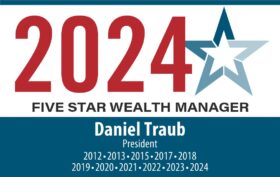The second quarter of 2021 continued the strong uptrend in stocks that began when the market bottomed in the first stages of the pandemic.
For the second quarter the S&P 500 was up 8.5%, small caps were up 4.3%, and international stocks were up 5%. While there were a few outliers (utilities +1%, energy +13%, and real estate +11%), most sectors had returns close to the S&P 500.
How strong has the uptrend in equities been? Since the market low on March 16, 2020, the S&P 500 has risen 80%. Yes, you read that correctly, 80%! Keep in mind that prior to this the market had fallen 30% in only a month.
According to the mathematics of advances and declines, in order to recover from a 30% decline, you need to make 42%, which happened by August 12, 2020. From that point the S&P 500 has risen an additional 27%.
Bonds also had a profitable second quarter. The BarCap Agg bond index was up 1.8%, and returns for other bond categories ranged from +1.2% (global bonds) to +3% (emerging market bonds, convertible bonds, and inflation bonds).
The year-to-date picture for bonds is less rosy, with the BarCap Agg down 1.6%.
I often talk about the long-term influences and expectations for the stock market. At the moment, however, there are some strong short-term trends that should keep the market moving in a positive direction over the next six to twelve months.
The first is Year-Over-Year (YOY) comparisons. The stock-evaluating world loves to look at YOY comparisons. This year’s sales compared to last year’s sales. This year’s net earnings compared to last year’s net earnings. You get the idea.
Nothing looks better than a strong YOY comparison.
How do you think the third quarter of 2021 is going to look in comparison to the third quarter of 2020? I’m thinking pretty good.
Business is getting back to normal very quickly as compared to last year when many businesses were struggling. It won’t even be close.
What’s that you say? Aren’t people aware of how bad the numbers were in 2020? Of course! It doesn’t matter. It is human nature to look at great YOY figures and be impressed. We can’t help ourselves!
The second short-term trend is pent-up demand. By this I mean consumer pent-up demand for everything that we haven’t been able to do the past 18 months. You probably see what I see. People can’t wait to get out there and spend their money.
Consumer spending is one of the pillars of the economy, and it is alive and well for the near term.
The biggest problem for businesses won’t be getting enough customers. It will be hiring enough employees to service them. Businesses can’t find enough workers. At some point employers will have to raise wages enough to entice people back into the workforce, which is inflationary.
But we have some time before inflation will be a problem for the stock market.
Tempo Financial Advisors’ 2nd Quarter Investment Performance
I am pleased to report that all four of Tempo’s investment programs had successful quarters, not only with respect to benchmarks, but also in relation to the all-important measure of “did we make money?”
Spoiler alert: Yes.
Tempo Lifestyle clients had returns of +5% for the quarter. Conservative accounts a bit less and aggressive accounts a bit more. Interestingly, conservative accounts were slightly ahead of benchmark, whereas moderate and aggressive accounts were in line with benchmarks. How can this be?
Our equity positions slightly underperformed the equity benchmark, while our bond and alternative positions overperformed their benchmarks. As a result, a higher percent of your portfolio allocated to bonds and alternatives corresponded to greater relative performance.
Tempo Dynamic Growth accounts were up 4.7% for the quarter, which was about 0.5% above benchmarks. Accounts have been rebalanced for the third quarter, and we remain at the maximum allowed equity allocation of 60%, with positions in small cap value, small cap growth, financial, and real estate.
Tempo Dynamic Income and Tempo Diversified Income returned +2.2% and +2.8% for the second quarter, respectively. This compares to the benchmark return of 1.8%.
Even more significant is that the year-to-date return for both Dynamic Income and Diversified Income was +1.7% as compared to the BarCap Agg return of -1.6%. I’ll take it anytime when we can generate a positive return in the face of a negative market and outperform by over 3% to boot.
Reminder
Please contact us if there has been a change in your financial circumstances that would warrant a fresh perspective on your portfolio.
Daniel J. Traub

